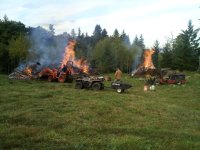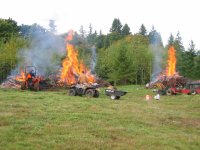SnowRidge
Elite Member
Thanks for all the replies. I kept seeing in different threads about people adding the fire extinguisher but really no reason why. I did read the one thread about the PT that caught fire and how he brought it back to life but that was the only one. I think when it comes time to replace the fuel line with a new one I might put in an inline fuel shut off valve. Now it makes sense to me why an extinguisher is prudent. So what type of extinguisher would be best to use and what location have you all installed yours in?
BobRip do you still change your fuel line every year with a new one or is the replacement line really not necessary to replace every year?
Thanks for all the replies it is well appreciated.
I don't know about the current models, but on my PT-425 there is no room to put a shut off valve on the bottom of the tank. Ideally, I would like a vacuum operated valve like found on motorcycles. If the engine quits, the fuel is shut off. An anti-spill rollover valve would be nice too.
Regarding the clear fuel line that Bob mentioned. I'm sure Bob got this from someone who got it from Power Trac, if he didn't get it directly. But personally, I have never heard that it should be replaced annually. The manuals don't say that at all. In fact, they don't say much of anything. This is typical Power Trac behaviour. Someone calls up and they say, "Oh you should replace that every --fill in the blank--." They told some people to replace the hydraulic hoses every two years, which is absurd and would cost a small fortune.
Does the clear fuel line need replacing periodically? You bet. Every year? I doubt it. Is a better quality line a good idea? Yes it is, and I have done that myself, but it took five years before it needed replacing. Just remember, the clear line serves a valuable diagnostic purpose. It lets you see bubbles in the fuel line, which help you diagnose the problems with the fuel system. If you don't have the clear line, make darn sure you retain a clear fuel filter. The bubbles in the line problem have become a real issue with today's hot running engines and gasohol fuels.







